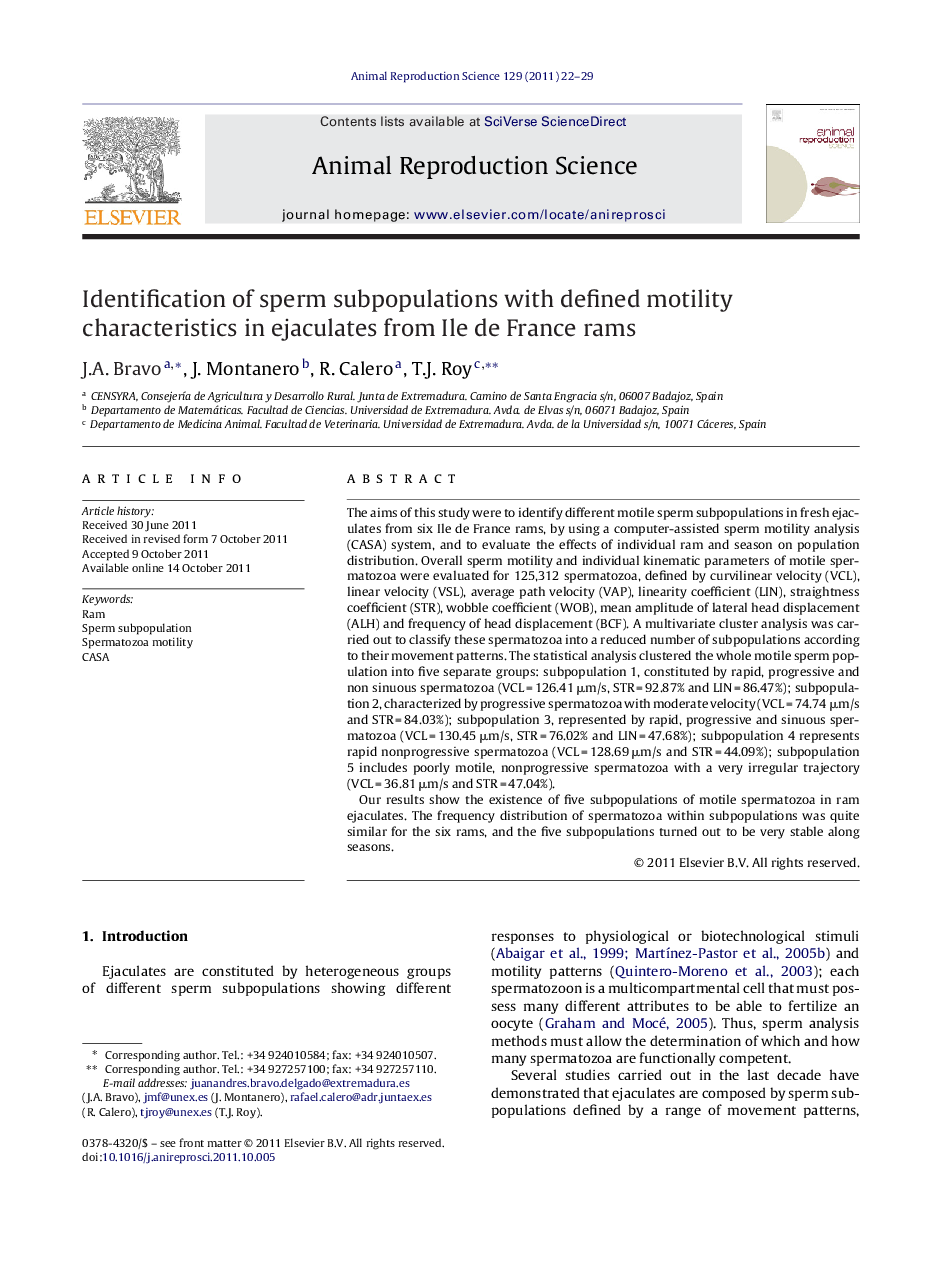| Article ID | Journal | Published Year | Pages | File Type |
|---|---|---|---|---|
| 2073366 | Animal Reproduction Science | 2011 | 8 Pages |
The aims of this study were to identify different motile sperm subpopulations in fresh ejaculates from six Ile de France rams, by using a computer-assisted sperm motility analysis (CASA) system, and to evaluate the effects of individual ram and season on population distribution. Overall sperm motility and individual kinematic parameters of motile spermatozoa were evaluated for 125,312 spermatozoa, defined by curvilinear velocity (VCL), linear velocity (VSL), average path velocity (VAP), linearity coefficient (LIN), straightness coefficient (STR), wobble coefficient (WOB), mean amplitude of lateral head displacement (ALH) and frequency of head displacement (BCF). A multivariate cluster analysis was carried out to classify these spermatozoa into a reduced number of subpopulations according to their movement patterns. The statistical analysis clustered the whole motile sperm population into five separate groups: subpopulation 1, constituted by rapid, progressive and non sinuous spermatozoa (VCL = 126.41 μm/s, STR = 92.87% and LIN = 86.47%); subpopulation 2, characterized by progressive spermatozoa with moderate velocity (VCL = 74.74 μm/s and STR = 84.03%); subpopulation 3, represented by rapid, progressive and sinuous spermatozoa (VCL = 130.45 μm/s, STR = 76.02% and LIN = 47.68%); subpopulation 4 represents rapid nonprogressive spermatozoa (VCL = 128.69 μm/s and STR = 44.09%); subpopulation 5 includes poorly motile, nonprogressive spermatozoa with a very irregular trajectory (VCL = 36.81 μm/s and STR = 47.04%).Our results show the existence of five subpopulations of motile spermatozoa in ram ejaculates. The frequency distribution of spermatozoa within subpopulations was quite similar for the six rams, and the five subpopulations turned out to be very stable along seasons.
